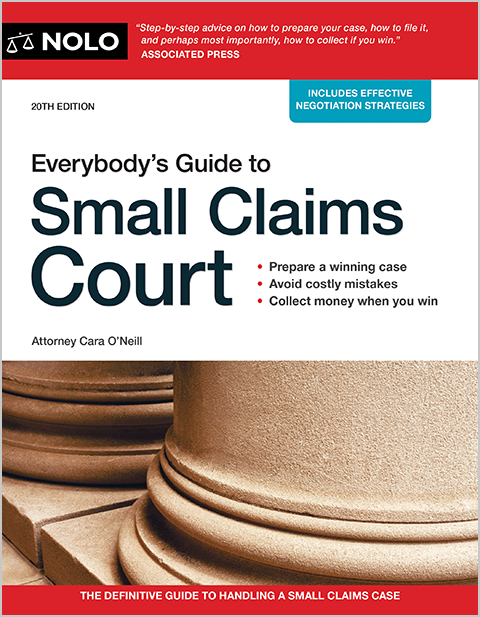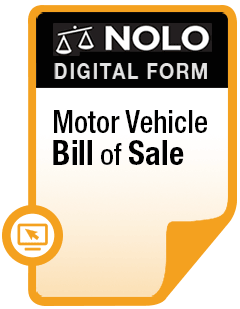Tips on making a claim under your own policy when the at-fault driver has no (or not enough) car insurance coverage.
If you've been in a car accident, and the other driver was at fault, you could end up making a claim through the uninsured motorist or underinsured motorist provisions of your own automobile insurance policy.
- These distinct (but related) types of car insurance coverage are required in some states. And in most states car insurance companies must offer uninsured and underinsured coverage to customers, who usually must decline in writing if they don't wish to add these options to their policy.
- Your uninsured motorist coverage will apply to cover your car accident injuries and related losses when the at-fault driver has no car insurance.
- Your underinsured motorist coverage will kick in when the at-fault driver doesn't have enough coverage to pay for your accident-related losses.
- What Is Uninsured Motorist Coverage?
- What Is Underinsured Motorist Coverage?
- How Do I Start the Insurance Claim?
- How Much Can I Get From an Uninsured Motorist Claim?
- You May Need to Negotiate a Fair Settlement of Your Uninsured/Underinsured Motorist Claim
- Your Uninsured/Underinsured Motorist Claim Could Go to Arbitration
- Uninsured/Underinsured Motorist Claims and "Bad Faith"
- Can I Sue the Uninsured/Underinsured Driver for Damages?
- What Is My Next Step?
What Is Uninsured Motorist Coverage?
The purpose of uninsured motorist coverage is to let you receive compensation for your injuries and other accident-related losses when you're in a crash with an at-fault driver who is uninsured.
Chances are, you will know on the date of the accident whether the at-fault party has liability insurance. If the police come to the accident scene, they will inquire into the insurance coverage details for every driver involved. If the at-fault driver does not have coverage, the police will likely inform you of this.
If the police do not come to the scene of your accident, you'll still exchange insurance information with the other driver. If the other driver confesses a lack of insurance coverage, that is your cue to consider an uninsured motorist claim under your own auto policy. In any event, once you notify your insurance company about the car accident, they'll be able to verify the insurance status of all drivers involved in the crash.
What Is Underinsured Motorist Coverage?
The purpose of underinsured motorist coverage is to bridge the gap when the dollar value of your car accident injury-related losses and the limits of the at-fault driver's liability coverage.
For example, suppose you are in a car accident and you incur $30,000 in medical bills and other injury-related losses. If the at-fault driver carries liability insurance with a policy limit of $20,000, the at-fault driver is underinsured (for purposes of any claim you'd make against them). In a situation like this, you would need to make an underinsured motorist claim on your own auto policy.
Unlike a car accident with an uninsured motorist, it takes time to figure out whether the at-fault driver is indeed underinsured when it comes to your injury claim. You may quickly find out the limits of the at-fault driver's coverage, but it will take time to determine the nature and extent of your injuries and where the total picture of your losses fits (or doesn't) within those limits: How much medical treatment you will require? How much work you will miss? How have your car accident injuries affected your life?
If the at-fault driver only carries state-minimum liability coverage of $20,000, and your injuries are severe, you may know pretty quickly you'll need to make an underinsured motorist claim; however, if the at-fault driver has $100,000 in liability coverage, it may be several months before you know you need to make an underinsured motorist claim.
How Do I Start the Insurance Claim?
Whether you're filing an uninsured or underinsured motorist claim, the first thing to do is report the accident to your own insurance company. From there, it's a matter of figuring out some initial information about the crash, including the other driver's insurance status. Your insurance company can explain your options if it looks like you'll need to utilize your uninsured or underinsured motorist coverage.
Starting an uninsured motorist claim after an accident is pretty straightforward, since the at-fault driver either has insurance, or they don't. Your insurance company will open the claim, investigate the accident, request and analyze your medical records and other evidence, and attempt to put a dollar value on your claim. This process can take a few weeks to six months or more, depending on the extent of your injuries.
On the other hand, as touched on above, in order to make an underinsured motorist claim you first need to understand the full spectrum of your car accident injury-related losses, measured against the at-fault driver's coverage picture. Then, in order to trigger your underinsured motorist coverage, you'll probably need to collect the limits of the at-fault driver's liability coverage (through a car accident insurance settlement, for example) before your own insurer will accept your UIM claim.
Learn more about getting a claim started after a car accident.
How Much Can I Get From an Uninsured Motorist Claim?
The total amount you can get from an uninsured motorist claim hinges on the dollar limits of your uninsured motorist coverage. It's often state law and/or insurance company policy that a driver's uninsured/underinsured motorist coverage can't exceed their liability coverage. So, if you've got $50,000 in liability coverage, you can't purchase more than $50,000 in uninsured motorist coverage. Insurers do not want people purchasing bare bones coverage for their own liability and loading up on uninsured/underinsured motorist coverage.
The good news is that with an uninsured motorist claim, you can usually receive compensation for the same kinds of injury-related losses that you might get in a liability claim against the at-fault driver, including:
- payment for past medical treatment of your car accident injuries
- payment to cover costs of future medical care necessary to treat your car accident injuries
- reimbursement of lost income, due to inability to work or time off to attend medical appointments
- compensation for the physical and mental "pain and suffering" associated with the car accident and your injuries.
Finally, keep in mind that most uninsured/underinsured motorist coverage applies only to car accident injuries; they usually can't be used to get your damaged vehicle repaired or replaced. To get this kind of coverage, you'll often need to purchase dedicated "uninsured motorist property damage" insurance or some similarly-named option.
You May Need to Negotiate a Fair Settlement of Your Uninsured/Underinsured Motorist Claim
It's typically easier to deal with your own car insurance company when you're making a claim after an accident, compared with making a third party car insurance claim with the other driver's insurer, for example). But that doesn't mean your insurance company is immediately going to pay your claim up to the limits of your uninsured/underinsured motorist coverage. That's especially true if there are questions about the nature and extent of your injuries. You may need to fight it out a bit in order to come away with a fair result. Get tips on settling a car insurance claim.
Your Uninsured/Underinsured Motorist Claim Could Go to Arbitration
If you and your car insurance company can't agree on a fair settlement of your uninsured or underinsured motorist claim, you probably don't have the option of filing a lawsuit in court.
That's because the insurance laws in most states (and the fine print of most car insurance policies) require that disputes over these kinds of claims be resolved in the arbitration process. In most situations, an arbitrator can decide everything from:
- the threshold issue of whether the injured policyholder is entitled to recover compensation under their UIM coverage, to
- how much compensation the policyholder should receive in line with the details of the accident and the resulting injuries.
Learn more about arbitration of car insurance claims.
Uninsured/Underinsured Motorist Claims and "Bad Faith"
If you make an uninsured/underinsured motorist claim, you can expect your insurance company will investigate your medical treatment, the nature of your injuries, and related details.
Every insurance company has a duty to handle claims in good faith. If your insurance company takes an overly adversarial approach to your uninsured/underinsured motorist claim, or drastically undervalues your claim and won't negotiate fairly, it may have violated its duty to handle your claim in good faith. In some situations, an insurer's mishandling of an uninsured/underinsured motorist claim can result in a bad faith claim against the insurance company.
Can I Sue the Uninsured/Underinsured Driver for Damages?
You always have the option of filing a lawsuit against an at-fault driver who's uninsured, or whose insurance coverage won't cover your car accident losses. The question is whether it's a worthwhile pursuit.
Filing a lawsuit means spending time and money. Whether you're hoping to win your case in court, or just force a settlement from the at-fault driver, it's important to make sure the defendant (the driver you're suing) has sufficient money or other assets. Remember, getting a court award in your favor is one thing; actually collecting money from a defendant is a separate story, and it's one that might not end well for you if the defendant can't pay. Learn more about collecting a judgment after a lawsuit.
What Is My Next Step?
If you've been in a car accident with an uninsured or underinsured driver, it might make sense to discuss your situation with a car accident lawyer. Especially if your injuries are significant, and there's no available insurance coverage for the majority of your accident-related losses, it's important to get a clear, honest explanation of your options. Learn more about how an attorney can help with a car accident claim.
- What Is Uninsured Motorist Coverage?
- What Is Underinsured Motorist Coverage?
- How Do I Start the Insurance Claim?
- How Much Can I Get From an Uninsured Motorist Claim?
- You May Need to Negotiate a Fair Settlement of Your Uninsured/Underinsured Motorist Claim
- Your Uninsured/Underinsured Motorist Claim Could Go to Arbitration
- Uninsured/Underinsured Motorist Claims and "Bad Faith"
- Can I Sue the Uninsured/Underinsured Driver for Damages?
- What Is My Next Step?



